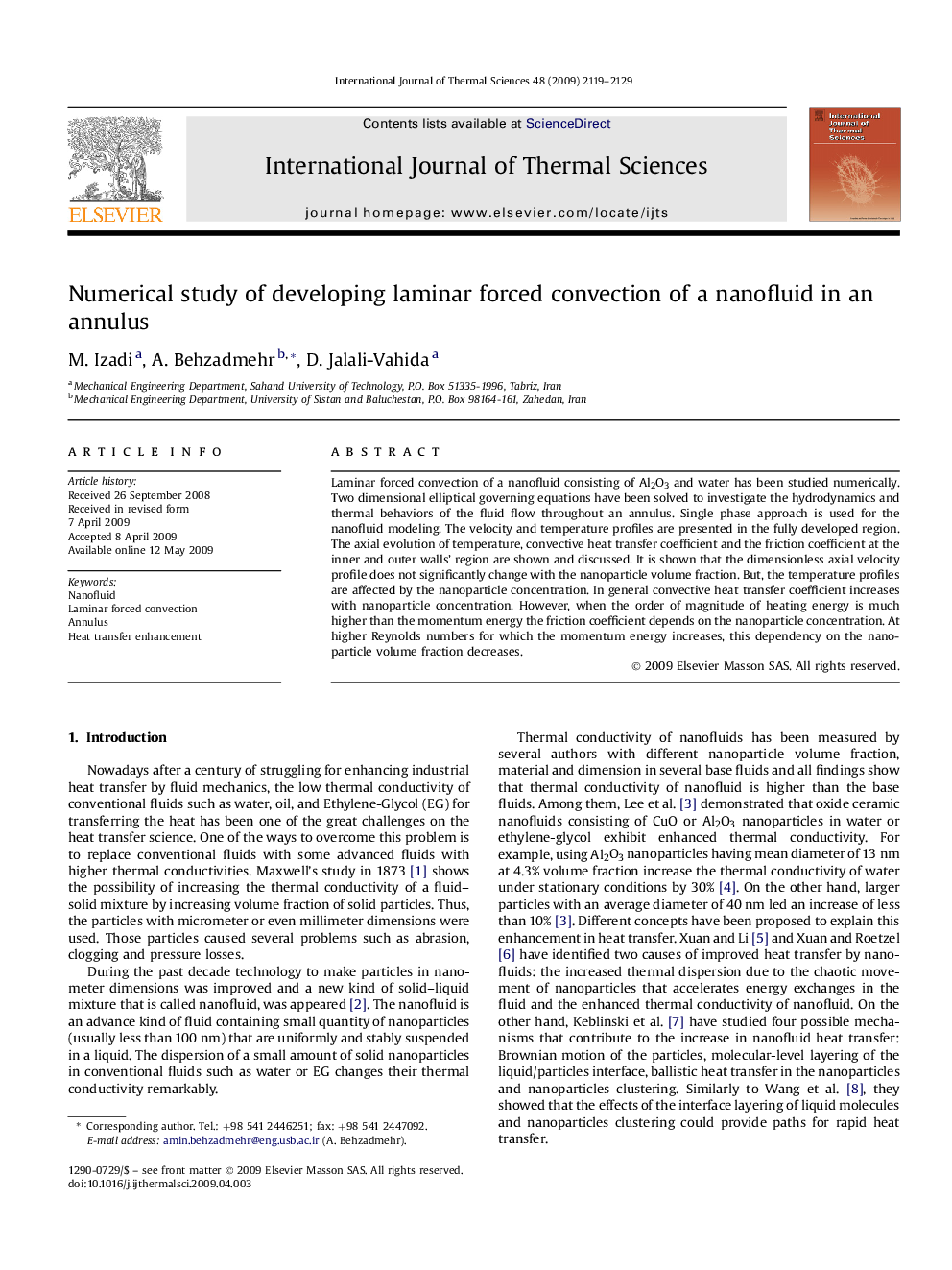| Article ID | Journal | Published Year | Pages | File Type |
|---|---|---|---|---|
| 668996 | International Journal of Thermal Sciences | 2009 | 11 Pages |
Laminar forced convection of a nanofluid consisting of Al2O3 and water has been studied numerically. Two dimensional elliptical governing equations have been solved to investigate the hydrodynamics and thermal behaviors of the fluid flow throughout an annulus. Single phase approach is used for the nanofluid modeling. The velocity and temperature profiles are presented in the fully developed region. The axial evolution of temperature, convective heat transfer coefficient and the friction coefficient at the inner and outer walls' region are shown and discussed. It is shown that the dimensionless axial velocity profile does not significantly change with the nanoparticle volume fraction. But, the temperature profiles are affected by the nanoparticle concentration. In general convective heat transfer coefficient increases with nanoparticle concentration. However, when the order of magnitude of heating energy is much higher than the momentum energy the friction coefficient depends on the nanoparticle concentration. At higher Reynolds numbers for which the momentum energy increases, this dependency on the nanoparticle volume fraction decreases.
